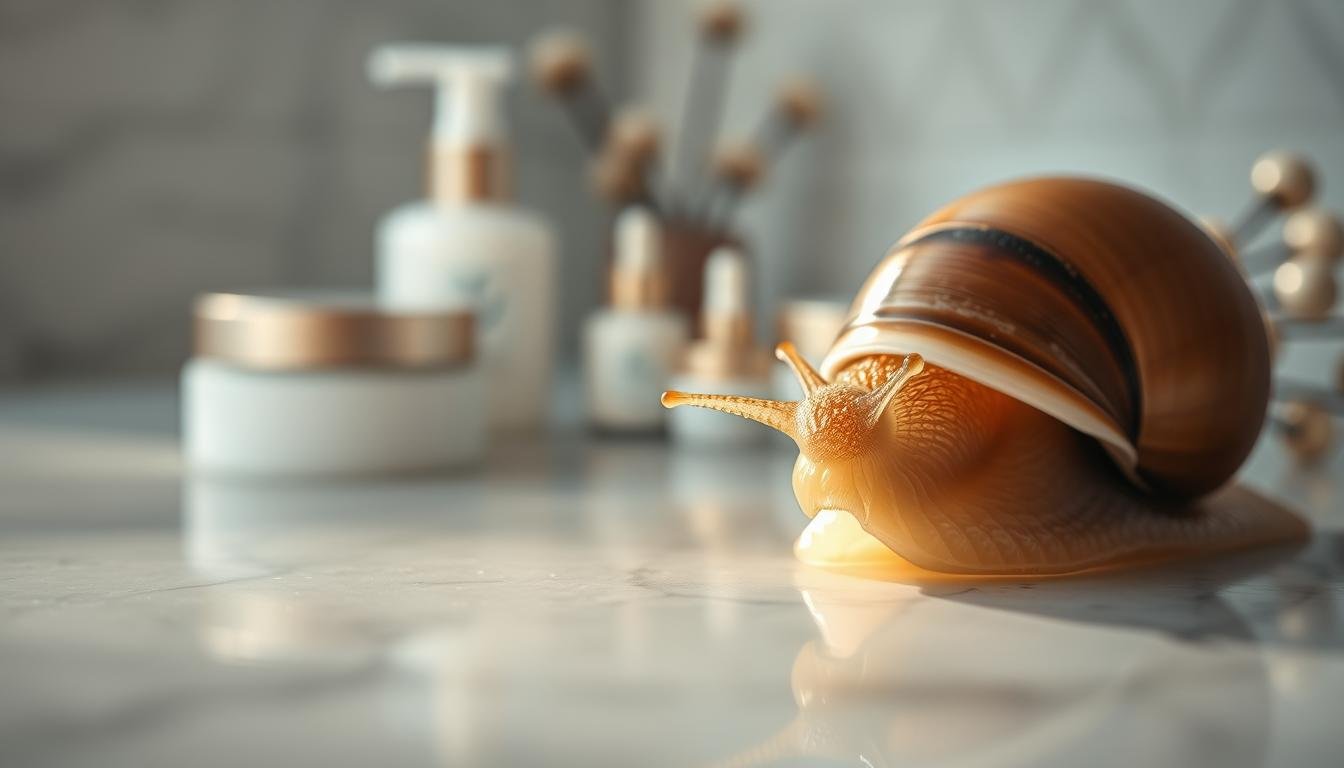Are migraines and headaches ruining your day? You’re not alone. Millions of people worldwide are looking for science-backed pain management. They’re turning to alternative therapies for relief.
With more people interested in holistic health, herbal remedies are getting attention. They’re seen as a way to get migraine relief without the side effects of regular medicines.
But do these remedies actually help? This article explores the world of herbal relief. We’ll look at the evidence behind these alternative treatments. We’ll see if they can really ease headache pain.
Key Takeaways
- Overview of popular herbal remedies for migraines.
- Scientific evidence supporting the effectiveness of these remedies.
- Potential benefits and risks associated with herbal treatments.
- Guidance on choosing the right herbal remedy for your needs.
- Insights into how herbal relief can be integrated into your pain management plan.
Understanding Headaches: Types and Triggers
Knowing the different types of headaches and what causes them is key to feeling better. Headaches are not just simple pains. They can be complex and have many causes.
Common Headache Types and Their Characteristics
There are many types of headaches, each with its own signs. The most common ones are:
- Tension Headaches: Feel like a band or squeeze around your forehead, neck, or both.
- Migraine Headaches: Have intense, throbbing pain on one side of your head. You might also feel sick, vomit, and be sensitive to light and sound.
- Cluster Headaches: Are very severe and happen on one side of your head. They often come in cycles and can make your eye tear and turn red.
| Headache Type | Characteristics | Common Triggers |
|---|---|---|
| Tension Headache | Band-like pressure around the head | Stress, poor posture |
| Migraine | Throbbing pain, often one-sided | Dietary factors, hormonal changes |
| Cluster Headache | Severe, one-sided pain | Alcohol, certain foods |
Identifying Potential Triggers in Daily Life
Finding out what triggers your headaches is important. Common things that can trigger headaches include what you eat, stress, not getting enough sleep, and things in your environment. Keeping a headache diary can help you figure out what triggers your headaches.
Some foods that can trigger headaches include:
- Foods with tyramine (like aged cheeses and wine)
- Monosodium glutamate (MSG)
- Artificial sweeteners
When to Seek Medical Advice for Headaches
Most headaches can be managed with changes in your lifestyle and over-the-counter medicines. But, there are times when you should see a doctor. You should get medical help if your headaches are:
- Sudden and very bad
- Have fever, confusion, or a stiff neck
- Getting worse over time
Understanding headaches and what causes them is the first step to managing them. By knowing the types of headaches and their causes, you can take steps to feel better.
The Power of Nature: Herbal Remedies for Migraines
Looking for a way to avoid drugs for headaches? Herbal supplements for migraines might be the answer. For centuries, people have used plants to help with pain and discomfort.
Popular Herbs Known for Headache Relief
Many herbs are known to help with migraines. Here are a few:
- Feverfew: It’s known for its anti-inflammatory effects, helping to reduce migraine frequency and severity.
- Ginger: Its analgesic and anti-inflammatory properties make it a good choice for easing migraine pain.
- Butterbur: Research shows it can lower migraine frequency, though how it works is still a mystery.
Mechanisms Behind Herbal Pain Relief
Herbs relieve pain in different ways. For example, ginger stops the body from making prostaglandins, which cause inflammation and pain. Other herbs might affect neurotransmitters or have anti-inflammatory effects.
| Herb | Proposed Mechanism | Potential Benefits |
|---|---|---|
| Feverfew | Inhibition of inflammatory pathways | Reduces frequency and severity of migraines |
| Ginger | Analgesic and anti-inflammatory effects | Alleviates migraine pain |
| Butterbur | Unknown, possibly anti-inflammatory | Reduces frequency of migraines |
How to Incorporate Herbs into Your Routine
Adding herbs to your daily routine is easy. You can drink them as teas, take tinctures, or capsules. Always talk to a doctor before starting any new supplements, especially if you’re on other medications or have health issues.
Start with small amounts and watch how your body reacts. Mixing herbs with other natural ways to prevent migraines, like changing your diet and managing stress, can make them work better.
Science-Backed Pain Relief: What Research Shows
Research into herbal remedies has shown they can help with headache symptoms. This makes them a good option for those looking for natural pain relief. It’s important to know how these remedies work.
Clinical Studies Supporting Herbal Remedies
Many studies have looked at how well herbal remedies work for headaches. For example, feverfew and ginger might help reduce migraine pain. A study in the Journal of Ethnopharmacology found feverfew extract really helped with migraines.
- Feverfew: It has anti-inflammatory properties and can help with migraines.
- Ginger: It has compounds that help with pain and inflammation, making it good for headaches.
Comparing Herbal Solutions to Conventional Medications
Herbal remedies and traditional medicines have different things to consider. Herbal remedies often have fewer side effects and are cheaper. But, how well they work can vary, and more research is needed.
| Remedy | Efficacy | Side Effects |
|---|---|---|
| Feverfew | High | Mild gastrointestinal issues |
| Ginger | Moderate to High | Rare, generally considered safe |
| Conventional Medications | Variable | Often more pronounced, including dependency risks |
Limitations and Considerations of Herbal Treatments
Herbal remedies are promising for headache relief, but there are things to keep in mind. The quality and strength of herbal supplements can change a lot. Also, they might interact with other medicines, and more research is needed to know how well they work.
- Always talk to a healthcare professional before trying herbal remedies.
- Choose high-quality herbal supplements from trusted brands.
- Be careful about how they might interact with other medicines.
Knowing the good and bad about herbal remedies helps people make smart choices. This way, they can use these natural options to manage their headaches better.
Essential Oils: Aromatherapy for Headache Relief
Aromatherapy uses essential oils to help with headaches. It’s a natural way to feel better. Essential oils have special properties that help with headache symptoms.

Popular Essential Oils for Headache Relief
Some essential oils are great for headaches. Lavender oil helps calm stress headaches. Peppermint oil cools and relieves tension headaches.
Eucalyptus oil and rosemary oil also help. They improve blood flow and reduce swelling.
Methods of Use: Inhalation vs. Topical Application
There are different ways to use essential oils for headaches. Inhalation is popular, either directly or through a diffuser. It lets the oils work fast.
Topical application is another option. Mix the oil with a carrier oil and apply it to the temples or neck. It gives targeted relief.
Safety Tips for Using Essential Oils
It’s important to use essential oils safely. Always dilute essential oils with a carrier oil before skin use. This prevents irritation.
Do a patch test to see if you react to the oil. Some oils are not safe for pregnant women or people with certain health issues. Always talk to a doctor before trying new treatments.
Lifestyle Changes: Complementing Herbal Remedies
Managing headaches goes beyond just herbal remedies. Making lifestyle changes can help reduce medication use and boost overall health.
Dietary Changes to Reduce Headache Frequency
What you eat can affect your headaches. Some foods can trigger them, while others can help prevent them. Eating a balanced diet with lots of fruits, vegetables, and whole grains is key.
- Stay hydrated by drinking plenty of water.
- Avoid foods high in sugar and salt.
- Include magnesium-rich foods like spinach and almonds.
| Food Category | Examples | Benefit |
|---|---|---|
| Fruits | Berries, citrus fruits | Rich in antioxidants |
| Vegetables | Leafy greens, bell peppers | High in magnesium and vitamins |
| Nuts and Seeds | Almonds, flaxseeds | Good source of magnesium and omega-3 fatty acids |
Importance of Hydration and Sleep
Drinking enough water and getting enough sleep are vital for preventing headaches. Dehydration and lack of sleep can lead to more headaches.
Tips for Better Hydration and Sleep:
- Drink at least 8 glasses of water a day.
- Establish a consistent sleep schedule.
- Create a relaxing bedtime routine.
Stress Management Techniques That Help
Stress can make headaches worse. Finding ways to manage stress is important.
Some helpful techniques include:
- Meditation and mindfulness practices.
- Yoga and other forms of gentle exercise.
- Deep breathing exercises.
Combining lifestyle changes with herbal remedies offers a complete approach to managing headaches. This approach can lead to better headache relief and a higher quality of life.
Acupressure and Other Alternative Therapies
There are more ways to manage headaches than just traditional treatments. Acupressure is one such alternative. It looks at the whole person, not just the symptoms.
Overview of Acupressure for Headache Relief
Acupressure is an old healing method. It uses pressure on certain body points to ease pain and calm the mind. It’s like acupuncture but without needles.
Key Benefits of Acupressure:
- Relieves pain and tension
- Promotes relaxation and reduces stress
- Improves circulation

Other Complementary Therapies Worth Considering
There are other alternative therapies for headaches too. Some include:
- Massage therapy
- Reflexology
- Aromatherapy
- Meditation and yoga
Each therapy has its own way to help with headache symptoms. They can work well with traditional treatments.
| Therapy | Description | Benefits |
|---|---|---|
| Massage Therapy | Involves manipulating muscles and soft tissues | Relieves tension, improves circulation |
| Reflexology | Applies pressure to specific points on the feet | Promotes relaxation, relieves pain |
| Aromatherapy | Uses essential oils for therapeutic benefits | Reduces stress, improves mood |
How to Find a Qualified Practitioner
Finding a good practitioner for alternative therapies is key. Here’s how:
- Check for certifications and licenses
- Read reviews and ask for referrals
- Ensure they have experience with headache relief
By following these tips, you can find a qualified practitioner for acupressure and other therapies.
DIY Herbal Remedies: Easy Recipes to Try
Looking for natural ways to ease headaches? DIY herbal remedies are a great option. You can make your own mix of herbs to fit your needs.
Simple Teas and Tinctures for Headache Relief
Herbal teas and tinctures are easy to add to your day. Feverfew and ginger are known to help with migraines.
- Feverfew tea: Steep 1 teaspoon of dried feverfew leaves in boiling water for 5-7 minutes.
- Ginger tincture: Combine 1 part ginger root with 2 parts vodka. Store in a dark glass bottle and take 10-15 drops as needed.
Essential Oil Blends for Immediate Comfort
Essential oils can offer quick relief. Mixing different oils can make them even more effective.
- Lavender and peppermint blend: Mix equal parts lavender and peppermint essential oils. Apply topically to the temples or inhale through a diffuser.
Guidelines for Safe Preparation and Use
It’s important to use herbal remedies safely. This helps avoid any bad reactions.
| Herb/Oil | Preparation Method | Dosage |
|---|---|---|
| Feverfew | Tea | 1 cup, 2-3 times a day |
| Ginger | Tincture | 10-15 drops, as needed |
| Lavender/Peppermint | Topical/Inhalation | Apply as needed or inhale through a diffuser |
With these easy recipes and tips, you can use herbal remedies for headaches. Always talk to a doctor before trying new remedies.
The Role of Mindfulness and Meditation
Mindfulness and meditation are great for finding drug-free headache relief. They can help reduce how often and how bad headaches are. Adding these to your daily routine might help a lot.
Influence on Headache Pain
Mindfulness changes how we see pain. It makes us more aware and in control of our pain response. Studies show that regular mindfulness can make headaches less intense.
Key benefits of mindfulness for headache pain include:
- Reduced stress, a common headache trigger
- Improved emotional regulation
- Enhanced pain tolerance
Techniques and Practices
There are many mindfulness techniques for headache relief. Here are a few:
- Meditation: Regular meditation lowers stress levels.
- Deep Breathing Exercises: Deep, controlled breathing relaxes the body and mind.
- Body Scan: This meditation focuses on each body part, releasing tension.
“Mindfulness is the practice of being fully present and engaged in the current moment, often achieved through meditation and deep breathing.”
Scientific Evidence
Research backs up mindfulness for pain relief. A study in the Journal of the American Medical Association found mindfulness meditation reduces pain. Another study showed that mindfulness-based stress reduction (MBSR) improves headache symptoms.
“The practice of mindfulness can lead to changes in the brain that are associated with reduced pain perception.”
Adding mindfulness and meditation to your routine is a holistic way to manage headaches. It works well with other natural strategies for migraine prevention. This approach helps achieve drug-free headache relief.
Conclusion: Finding What Works for You
Managing headaches often means finding what works best for you. This might include the right treatments and lifestyle changes. Knowing the types of headaches and what triggers them helps you make better choices.
Tailoring Your Headache Management
There are many ways to treat headaches, like herbal supplements for migraines. You can also try alternative methods like acupressure and mindfulness. It’s important to mix these with traditional treatments, with help from a doctor.
Guidance for Effective Care
Getting advice from healthcare professionals is key. They can guide you through the many options for treating headaches. This ensures you get the best care for your needs.
By trying different treatments and working with doctors, you can find a plan that works for you. This can greatly improve your life.



